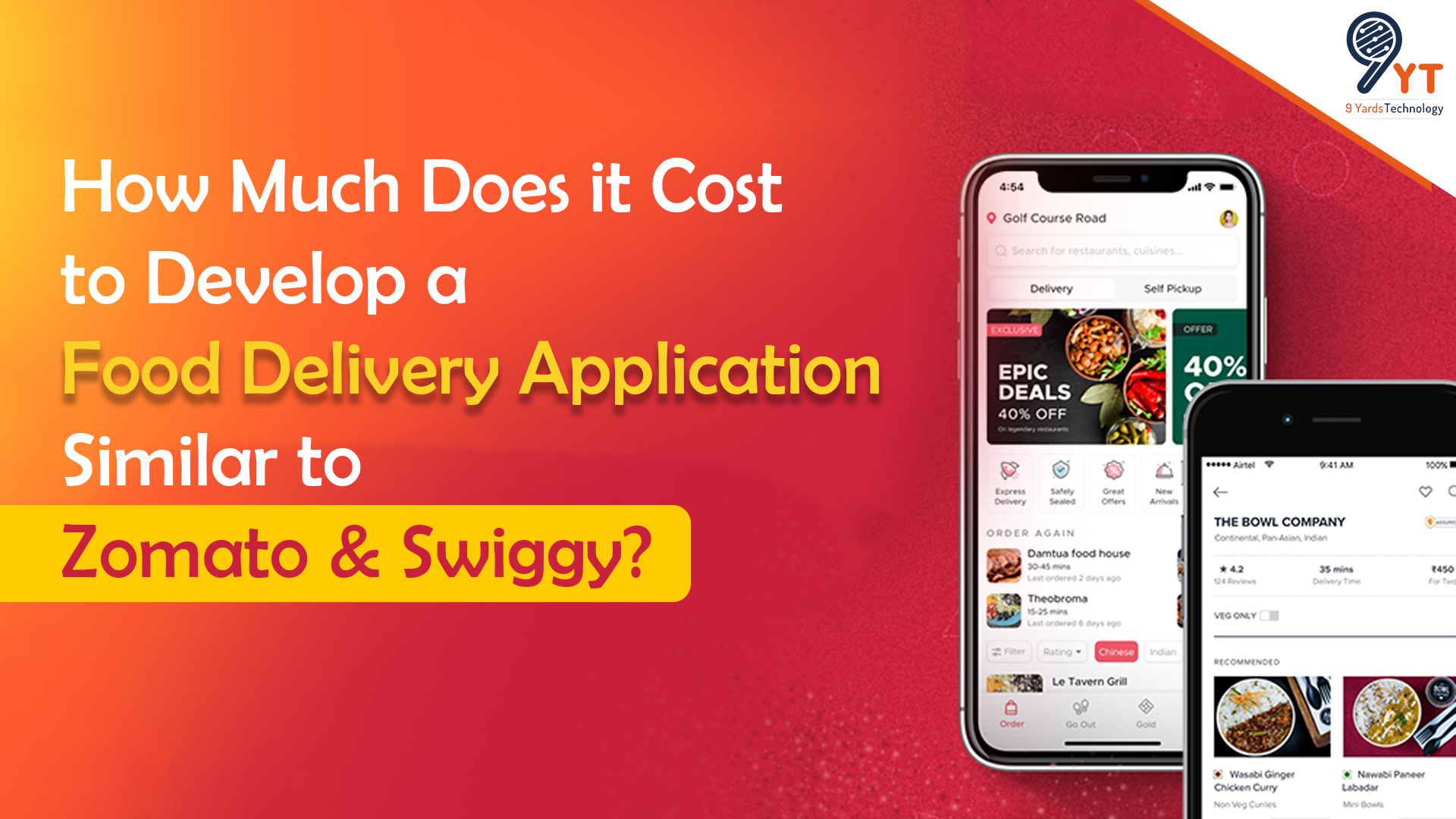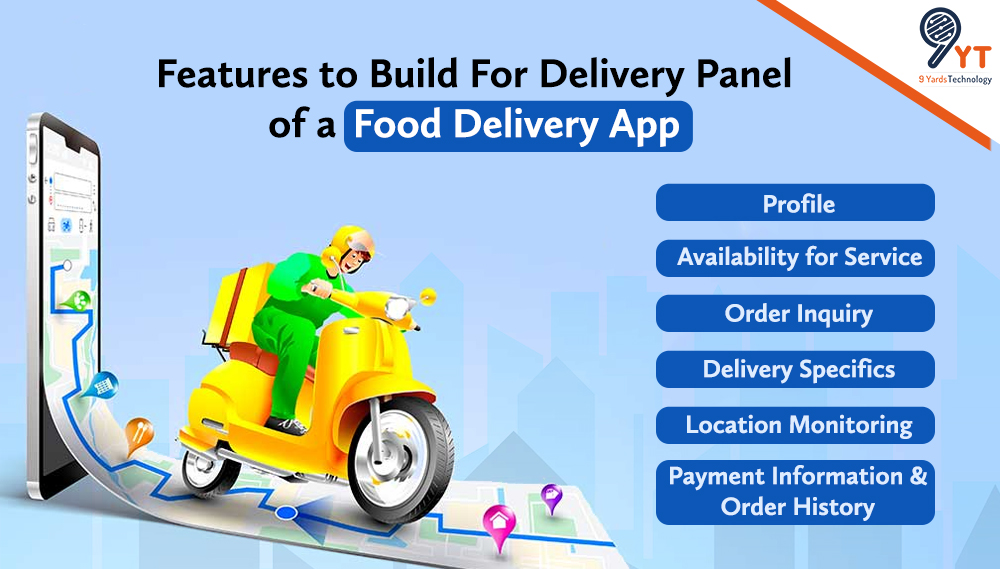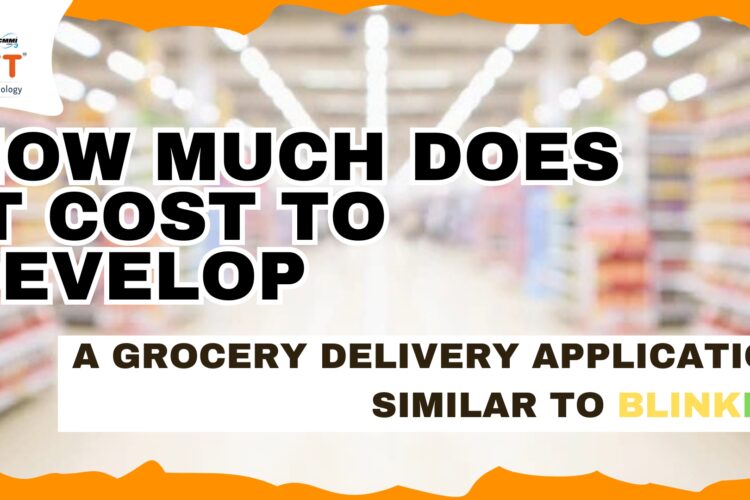
In today’s fast-paced world, nobody has time to wait in lengthy lines for meals, make reservations for tables, or peruse menus. The easiest method for them to obtain what they want is to place an online order through a food delivery app. This is the reason for the popularity of applications like Swiggy and Zomato among those who are employed or have hectic schedules, students, bachelors, and even those who are too lazy to prepare a meal.
Boost in Food Delivery Applications Like Zomato/Swiggy
One of the hospitality industry’s fastest-growing sectors is food delivery. The ease and flexibility of ordering meals online from any location at any time has attracted the attention of customers in the twenty-first century.
According to a recent analysis, businesses connected to online food delivery apps make 47% more money than non-linked ones. The industry for online meal delivery was estimated to be worth 2.9 billion dollars in 2020 and is projected to increase momentum by 35% and reach around 13 billion dollars by 2025.
90–95% of the market share in the online meal delivery industry is shared by the industry leaders Zomato and Swiggy.
But before you start to wonder how you might join this burgeoning sector, you need to understand exactly what goes into making an app like Swiggy/Zomato. The main questions that arise at this thought are – Do you need to hire a dedicated app development team? How much will it cost to create an app that delivers food on demand? In case you’re considering creating a Swiggy/Zomato-style app, you might want to first learn about the basics of creating the app here!
Everything you need to know about creating a SwiggyZomato-like app is covered in this post to help you launch your own food delivery app.
How does an app for meal delivery operate?
Hyper-local meal delivery is the main emphasis of food applications like Swiggy and Zomato. The online food delivery app will provide details about restaurants and cafes, including their menus, prices, hours of operation, and locations. The search box allows users to use their preferred restaurant names, menu items, or cuisines. The user can select the most appropriate choice from a list of possibilities that the search returns. The consumer may also base their choice on deals and discounts that are available as well as other user reviews and ratings.
By storing delivery locations, food delivery applications can speed up deliveries. Additionally, they may filter the choices depending on the tastes. When checking out, the user has a variety of alternatives, including UPI, e-wallets, debit or credit cards, and meal cards, among others. Users may access their previous orders, invoices, and wallet balances via the app. Additionally, users may also control their delivery addresses.
Components of a Food Delivery App Like Zomato/Swiggy
You must be aware that an on-demand food delivery app functions with a client, restaurant, admin, and delivery panel while designing one. Special features and functionalities are included in each panel. Let’s now explore the particular characteristics that you must incorporate into each panel.
Features to Build For User Panel of a Food Delivery App

For your food delivery service to have a fantastic user experience, you must create an easy-to-use and smooth user panel. When building a user panel, take into account the following characteristics:
- App Registration: Allow users to register for the app using a variety of methods, such as their email address or cellphone number.
- User Profile: Make it possible for users to enter contact information or delivery addresses and other useful details for creating user profiles.
- Search Menu: Ensure your app contains a search bar so consumers can look for different meals or eateries easily. Also, allow consumers to utilise a variety of filters to make their searches simpler and faster.
- Check the Details: After choosing a meal or a restaurant, people may look for specific details about each establishment, such as the menu and prices.
- Calculation of Prices: Prices should be displayed in either currency or by weight, whichever is more user-friendly. If you’re creating a cross-platform application, you may employ a React native developer. They will assist you in creating this functionality so that it functions flawlessly across many platforms.
- Cart Option: With this option, customers can quickly and easily place orders by adding the products they desire from the menu to their basket with just one click.
- Order History: Include this function so that users may view their order history and, if required, handle previous orders, such as cancelling or altering orders that were placed with errors.
- Settings: Users should have the option to modify options such as the language, the frequency of delivery, and the location without contacting customer care.
- Notifications: To ensure that clients don’t forget about pending orders, notifications will assist. Additionally, they must inform customers about recent offers, new menus or promotions.
- Saved addresses: For frequent clients with a clear idea of what they want, saving addresses speeds up the ordering process.
- Order Pickup: Include a feature in your app that allows users to follow the driver’s location as they pick up and deliver orders.
- Reviews & Ratings: Based on personal experience, this enables people to give insightful commentary and offer ratings for the restaurant, food, and the driver.
- Payment Integration: Give users a variety of payment alternatives. Allows customers to make payments using a variety of online payment options, including Google Pay, PayPal, and more.
- Logout: A logout button should always be present on the app to make it simple for users to unsubscribe from your database.
User profiles give your app individuality and encourage usage by displaying users’ usage history, which has been proven to inspire users to use the app more frequently. It’s crucial to produce a design that fits the demands of your target audience and is both aesthetically pleasing and useful.
Features to Build For Restaurant Panel of a Food Delivery App
There are a few essential elements your restaurant panel must have if you want to create a meal delivery software similar to Swiggy/ Zomato.
- Get Registered: Permit restaurants to sign up for the app using the login information provided by the admin panel.
- Menu Upload: Restaurants can post their menus using this function. A straightforward form or integration with a POS system can be used to do this.
- Track Delivery: You must incorporate tools that let restaurants keep track of orders and control deliveries. This can be accomplished by connecting with a third-party delivery service or using an order management system.
- Accept Payments: Restaurants may take online payments thanks to multi-payment interfaces. This can be accomplished by connecting with a third-party payment processor or using a payment gateway.
- Accept/Decline Order: Restaurants have the discretion to accept or decline meal orders based on the availability of staff.
- Customer Support: Ensure that the restaurant panel has the capability to provide establishments with customer support. Live chat, email, or phone help are all available for doing this.
The next step is to enter information about each restaurant’s location on your map. Your app will become much better with the help of these features!
Features to Build For Admin Panel of a Food Delivery App

The admin page of your app must have a few essential features if you plan to create a food delivery app similar to Zomato/Swiggy.
- Manage Orders and Deliveries: The admin panel must contain a function that makes it easier to manage orders and keep tabs on the status of deliveries.
- Manage Menu Information: The administrator must be able to add and modify restaurants and menu items.
- Manage Delivery Times: Give the admin control over the drivers’ schedules. The admin should instantly forward the orders to other delivery personnel if the assigned delivery boy cancels the delivery.
- Track Payments: In order for clients to pay for their orders smoothly, the admin must set up a payment gateway.
- Track Performance: Include a function in the app that allows the administrator to assess the performance of restaurants and adjust their ranking accordingly.
These are the fundamental functions that must be built into the app for food delivery. However, if you want to compete with Zomato as a feature-rich app, make sure you work with a web developer who can help you make use of the more sophisticated capabilities. That will, however, significantly increase your expenses and development time.
Features to Build For Delivery Panel of a Food Delivery App
The delivery boy makes sure that the requested meal is delivered quickly. The delivery panel enables the monitoring of all client orders. The basic features of a delivery panel include the following:
- Profile: Drivers can save and update their personal information on the driver panel.
- Order Inquiry: Depending on their convenience and availability, they can review orders and approve or reject delivery.
- Location Monitoring: The driver may deliver the order to the client on time by keeping track of the customer’s position.
- Availability for Service: Drivers can also specify whether or not they will be available throughout the order request procedure.
- Delivery Specifics: The driver has the option to check order details such as the order location, user name, etc.
- Payment Information & Order History: Drivers also have access to comprehensive information regarding prior orders and payments.
Cost of Developing An App Like Zomato/Swiggy
The price of developing apps like Swiggy/Zomato varies depending on a number of things. These apps’ development expenses would be a little more than those of straightforward restaurant apps because they are database apps.
Let’s calculate the overall cost of developing an iOS and Android food delivery app.
Solution 1 – Native Development
Native Development |
Android |
IoS |
| Mobile Application Development | $6,500 | $7,800 |
| UI/UX Design | $3,000 | $3,000 |
| Backend Development | $5,000 | $5,000 |
| Admin Panel Development | $4,100 | $4,100 |
| Quality Assurance | $3,000 | $3,000 |
| Project Management | $4,000 | $4,000 |
Solution 2 -Hybrid/Cross-platform Development
Hybrid/Cross-platform Development |
Costing |
| Mobile Application Development | $8,000 |
| UI/UX Design | $3,000 |
| Backend Development | $4,000 |
| Admin Panel Development | $4,100 |
| Quality Assurance | $4,500 |
| Project Management | $3,000 |
The estimate is tentative and dependent on a number of variables. It may be discussed while the final agreement is being made.
Key Elements That Affect the Cost of a Food Delivery App Are:
The price of a food delivery app is influenced by the following crucial elements.
1) App Size
The size of the food ordering app as a whole affects the price. As the app becomes more user-oriented and functionally advanced, the size of the app will also increase and hence it will ultimately cost more than the traditional apps.
2) App Platform
To make the most of your application, structure it into several stages. Since the majority of clients use Android and iOS devices, your application should give these platforms high consideration. The price to create an app similar to Swiggy or Zomato varies depending on the platform; prices for Android platforms are often greater than those for iOS platforms because there are typically more devices to test the app against. Therefore, the cost varies between a food-ordering app for Android and a food-ordering app for iPhone.
3) App Design
The design of the app is one of the biggest factors that contributes to the popularity of the app. To retarget users, apps like Swiggy or Zomato need an appealing design, which necessitates the usage of cutting-edge tools and technology. Hence, you must choose an app-developing company that has demonstrated technological proficiency in creating attractive apps at competitive pricing.
4) Databases and APIs
Food delivery applications handle a lot of data, so it’s critical that they receive regular updates from cafés and restaurants. Consequently, the application requires a robust database with the highest level of security. The cost of developing applications like Swiggy and Zomato is further increased by the integration of payments and GPS tracking with features like push notifications.
5) Development costs
The people who design the core of the mobile app charge certain costs. Push alerts, geo-maps, and mobile wallets are examples of advanced features that result in increased developer fees. The cost of a developer may vary based on the expertise, relevant experience, and location of the developer.
6) UI/UX Design
The work done by design engineers also has a sizable amount of impact on the app development costs for apps like Swiggy/Zomato. Since it is tied to the law of first impressions, having an appealing user interface and user experience design are crucial to attracting more customers.
Most of the app development firms cover the license hosting expenses as well as the app hosting fees, including the designer’s charge. Hence, it is beneficial to look for a good app development company that provides all the services in a single package.
7) Testing & Release
The testing of the application is a crucial step before releasing it in the market since it ensures the product is error and bug-free. Automated QA testing and necessary regular checks make sure the program is perfect to be deployed and released to the online app stores.
8) App Store Optimisation
For customers looking to download a comparable program to find your application, ASO (App Store Optimisation) is a basic requirement. After a successful launch, a mobile app development company with a wide range of skills may assist with properly showcasing and marketing your application.
Final Words
To sum up, if you’re considering creating a food delivery application similar to Zomato/Swiggy, you must first have a fantastic understanding of functionality. The features you intend to add to your app must be crystal clear to you. A big success and a cost-driven aspect of developing an app is hiring a good mobile app developer. They will carefully collaborate with you to create an app that exactly represents your business and guarantees a great user experience.
So, whether you need to enhance an existing app or have the wonderful idea to create one like Zomato/Swiggy from scratch, all you need is the right choice of seasoned developers. If you haven’t chosen any developers yet, get in touch with us to discuss your details and get unmatched quality solutions.





